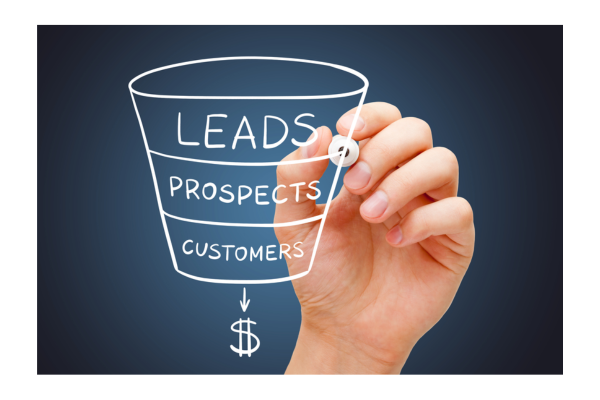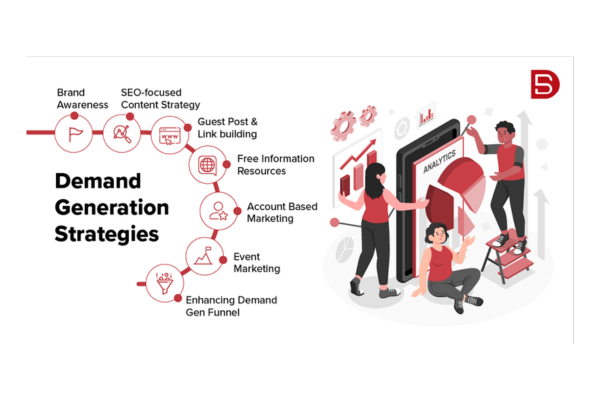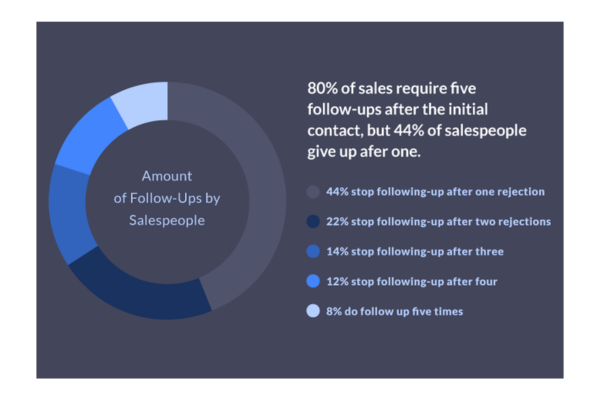
How to Get More Beauty Bookings
The Reality of Price-First Conversations: A Strategic Approach
Every beauty business owner knows the scenario all too well. A potential client reaches out, and before any meaningful conversation can take place, they ask, “How much does it cost?” While this question is natural—people are accustomed to prioritizing cost when making decisions—it can feel disheartening for professionals who know their services offer far more than just a price tag.
To shift the narrative, it’s important to understand the underlying reasons behind price-first questions. Often, it’s not just about the number; it’s about the client's comfort zone. They may:
Lack Education on Your Services: If they’re unfamiliar with your offerings, the price becomes their only reference point.
Feel Financial Pressure: Tight budgets make cost a top concern, even before understanding value.
Seek Simplicity: Comparing services based on price alone seems easier than digging into details.
Redirecting the Conversation
Rather than seeing price-first questions as a dead end, approach them as an opportunity to educate and build trust. Here’s how:
Acknowledge the Question: Respect their curiosity without diving straight into numbers. For example, respond with,
“Great question! The price depends on the specifics of what you're looking for, but let me explain what makes my services unique.”Highlight Value: Emphasize results, expertise, and the personalized care they’ll receive. Shift the focus to what they’ll gain, not just what they’ll spend.
Ask Questions in Return: Redirect the conversation by asking about their goals, challenges, or preferences. This shifts the interaction from transactional to relational.
Educate with Confidence: Clients often ask about cost first because they don’t yet see the value behind the service. Explain what sets you apart—your experience, advanced techniques, or the long-term benefits of your work.
Avoid Apologizing for Your Prices: Confidence is key. Present your pricing as a reflection of your expertise and the quality you provide, not as something negotiable.
The Bigger Picture
When a potential client leads with price, it’s not a rejection of your value—it’s an invitation to share it. By steering the conversation away from cost and toward the benefits and results your services offer, you can transform price-first inquiries into meaningful connections.
Every interaction is a chance to educate and inspire. When clients truly understand the value you bring, the focus shifts naturally from “How much does it cost?” to “When can we start?”

A Case Study in Success: From Zero to Sixty Clients in 90 Days
In 2018, a permanent makeup artist with minimal initial assets transformed their business from having zero clients to securing 60 bookings within just 90 days. This case study examines how they achieved this remarkable growth through strategic client communication and relationship-building, rather than through traditional marketing methods or price competition.
Initial Situation
The artist started with just three before-and-after photos, no social media presence, and a limited marketing budget. They faced significant challenges in a highly competitive industry where established competitors had extensive portfolios and strong market presence.
Strategic Approach
Relationship-First Communication
The artist adopted the philosophy that "He who owns the relationship wins," making this the cornerstone of their business strategy. Every inquiry received a personalized response within 2 hours, followed by individual consultation calls. They focused on understanding client needs and concerns rather than pushing for immediate sales.
Lead Handling Process
Their systematic approach began with warm, personalized responses to inquiries, followed by 30-minute consultation calls focused on education and understanding client needs. After consultations, they provided detailed information packets and maintained consistent, non-pushy follow-up communication.
Results and Timeline
In the first month, they secured 10 client bookings and collected initial testimonials. By the second month, word-of-mouth referrals began driving growth, leading to 20 additional bookings. The final month brought 30 more bookings, establishing a waiting list and strong social proof.
The artist achieved an 85% consultation-to-booking conversion rate, with 40% of new clients coming from referrals. Most importantly, they maintained these results without discounting prices.

The Science Behind Lead Qualification
Price inquiries are often misinterpreted as a sign of an unqualified lead, when in reality, they represent a natural starting point in the customer journey. Consider how we approach significant purchases in our own lives - whether buying a car, choosing a wedding venue, or selecting a new phone, price typically serves as an initial filter that helps us narrow down our options. This behavior isn't indicative of being price-sensitive or uncommitted; it's simply part of how humans make informed decisions about their purchases.
The true qualification of a lead is reflected in their engagement during the follow-up conversation, not just their initial pricing questions.
Genuine interest is demonstrated when a potential client shifts their focus from price to:
Procedure details
Recovery time
Long-term results
This progression often doesn't happen spontaneously; it requires skilled guidance from the service provider.
A well-crafted response to a price inquiry can:
Open the door to deeper conversations
Highlight the value of the service
Emphasize the provider's experience and expertise
Focus on the client’s desired outcomes
The most successful beauty professionals understand that lead qualification is a dynamic process rather than a static assessment. Instead of dismissing price-first inquiries, they use these questions as opportunities to educate potential clients about the value of their services. They recognize that even high-end clients who are fully prepared to invest in quality services will often begin with price questions. By responding with empathy and understanding, while gently steering the conversation toward the client's desired outcomes and concerns, these professionals transform what might initially appear as "price shopping" into meaningful consultations that frequently lead to bookings. This approach acknowledges both the practical and emotional aspects of decision-making in beauty services, where the final investment often represents not just a financial commitment but a personal one as well.
The Strategic Response Framework
When faced with the inevitable price question, successful beauty professionals follow a carefully crafted response framework. Here's the exact script that has proven successful in converting leads to clients:
Step 1: Initial Acknowledgment
"Thank you so much for inquiring! Have you been looking into [specific service]?"
This opening response accomplishes several crucial objectives:
- Shows appreciation for their interest
- Demonstrates professionalism
- Begins the qualification process
- Opens a dialogue about their needs
Step 2: Understanding Their Journey
When they confirm they've been researching the service, this indicates they've likely spoken with other providers but haven't found the right fit. This is your opportunity to differentiate yourself through superior client care and communication.
The next critical question: "What's held you back from obtaining the service so far?"
This question reveals their primary concerns and objections, allowing you to address them directly and thoughtfully.
Step 3: The Value Proposition
When they inevitably mention price (which happens about 90% of the time), respond with:
"I completely understand that price is important to you. However, our services are not one-size-fits-all. Would you happen to have time for a quick 5-minute phone consultation to really go over the service and how we can help you?"
Step 4: Handling Price Persistence
If they push back and insist on knowing the price upfront, use this powerful response:
"I completely understand that you're very price conscious, and I understand that someone else might have given you a price. However, that's what makes our company different - I really want to make sure we're a good fit, and I want to ensure I prescribe the right procedure for you. Most artists lead with price and just want to get somebody in the door. At our studio, we want to make sure we identify the right style [such as ombre, powder, or combo] to really determine which approach will give you the best results. That way, I can give you an accurate price. Do you happen to have time for 5 minutes?"
The Psychology of Value-Based Selling
Understanding the psychology behind client decisions is crucial for success in the beauty industry. When potential clients fixate on price, they're often operating from a scarcity mindset or negativity bias. Your role as a beauty professional isn't to manipulate or pressure them but to guide them back to focusing on value and desired outcomes.
Remember: Your job isn't to persuade people to book your service. Your job is to guide them toward solutions that will genuinely help them achieve their desired results. This ethical approach to sales creates trust and builds long-term client relationships.

The Power of Follow-Up
Even with perfect scripting, not every lead will convert immediately. In the case study mentioned earlier, about 70% of leads agreed to the consultation after the initial conversation. The remaining 30% initially ghosted but were eventually converted through persistent, professional follow-up.
The key to successful follow-up is consistency and professionalism. Each contact should add value and demonstrate your commitment to helping them achieve their desired results.

Marketing Integration: Creating Quality Leads
While handling price inquiries effectively is crucial, the quality of your leads also matters. Working with experienced marketing professionals who understand the beauty industry can significantly impact your lead quality and cost per acquisition.
Consider these industry benchmarks:
- Average cost per lead with optimized marketing: $1-2
- Typical industry cost per lead: $7 or more
- Monthly ad spend for successful beauty businesses: $500,000 to $1,000,000
These numbers demonstrate the importance of working with marketing professionals who understand the beauty industry and can optimize your advertising spend effectively.
Building a Value-First Culture
To successfully implement these strategies, beauty businesses must cultivate a value-first culture throughout their organization. This means:
Shifting the Mindset
Move away from viewing sales as persuasion and instead embrace the role of trusted guide and advisor. Your goal is to help clients achieve their desired results, not just fill your appointment book.
Training Your Team
Ensure everyone in your organization understands and can implement these communication strategies effectively. Role-playing exercises can help staff become comfortable with these conversations.
Maintaining Consistency
Apply these principles consistently across all client interactions, from initial inquiry to post-service follow-up.
Common Challenges and Solutions
Challenge 1: High-Pressure Sales Tactics
Many beauty businesses feel pressured to compete on price or use aggressive sales tactics. Instead, focus on building relationships and demonstrating value.
Challenge 2: Lead Quality Concerns
Instead of blaming marketing for unqualified leads, implement proper qualification processes and follow-up procedures.
Challenge 3: Price Shopping
When clients compare prices across providers, use it as an opportunity to educate them about the factors that influence price and the value you provide.
Measuring Success as a Beauty Professional
Success in implementing effective strategies as a beauty professional can be assessed using a combination of short-term and long-term metrics. These metrics provide valuable insights into the health of your business and help refine your approach for sustainable growth.
Short-Term Metrics
1. Conversion Rate from Inquiry to Consultation
This metric tracks how many potential clients who inquire about your services actually book a consultation. It highlights the effectiveness of your initial communication and marketing strategies.
How to Improve: Optimize your response time, social media presence, and lead nurturing strategies to convert inquiries into consultations.
2. Consultation to Booking Ratio
This measures the percentage of consultations that result in confirmed bookings. It’s a reflection of how well you build trust and showcase your expertise during consultations.
How to Improve: Develop a structured consultation process that clearly communicates the value of your services and addresses client concerns.
3. Average Client Value
This refers to the average amount clients spend per visit, providing insight into the effectiveness of upselling, cross-selling, and offering premium services.
How to Improve: Introduce service bundles, retail product recommendations, or add-on treatments to enhance client spending.
4. Cost Per Acquisition (CPA)
Understanding how much it costs to acquire a new client helps measure the efficiency of your marketing efforts. A lower CPA means your marketing strategy is working effectively.
How to Improve: Leverage targeted ads, organic social media content, and referral programs to reduce acquisition costs.
Long-Term Metrics
1. Client Retention Rates
Retention rates show how many first-time clients return for additional services. High retention rates indicate client satisfaction and loyalty.
How to Improve: Build retention by offering loyalty rewards, personalized follow-ups, and consistently delivering high-quality services.
2. Referral Rates
Referrals demonstrate client trust and satisfaction, as happy clients are more likely to recommend your services.
How to Improve: Implement a referral program with incentives like discounts or complimentary services for referring clients.
3. Lifetime Client Value (LCV)
This metric measures the total revenue a client generates throughout their relationship with your business. Increasing LCV can lead to significant profitability.
How to Improve: Focus on client retention, upselling, and exclusive services to encourage repeat visits and increased spending.
4. Brand Reputation
Your brand’s reputation is reflected in online reviews, social media engagement, and word-of-mouth feedback. A positive reputation attracts more clients and fosters trust in your expertise.
How to Improve: Consistently deliver exceptional results, actively engage with clients online, and respond to negative feedback promptly and professionally.
Tools for Tracking Metrics
Customer Relationship Management (CRM) Software: Track client interactions, bookings, and retention rates.
Social Media Insights: Analyze engagement, reach, and conversions from your posts and ads.
Financial Tools: Use tools like QuickBooks or specialized salon software to calculate CPA, LCV, and average client value.
Review Platforms: Monitor platforms like Google, Yelp, and social media for client feedback and reputation management.
By consistently monitoring these metrics and adjusting your strategies accordingly, you can build a thriving beauty business focused on client satisfaction and long-term success.
Future-Proofing Your Beauty Business
The beauty industry is ever-evolving, driven by new technologies, treatments, and shifting client expectations. To stay ahead and ensure long-term success, beauty professionals must focus on key strategies for growth and adaptability. Here are some essential steps for future-proofing your beauty business.
Continuous Education
1. Keep Updated on Industry Trends
Stay informed about the latest trends in beauty treatments, products, and client preferences. This knowledge ensures your services remain relevant and in demand.
2. Invest in Advanced Training
Expand your expertise by attending workshops, certifications, and advanced training programs. Specializing in new techniques can set you apart in a competitive market.
3. Learn New Communication Techniques
Effective communication with clients is key to building trust and ensuring satisfaction. Invest time in learning how to better understand and address client needs.
4. Study Market Developments
Analyze industry reports, competitor strategies, and emerging market demands. This insight will help you adapt your offerings and position your business strategically.
Technology Integration
1. Implement Efficient Booking Systems
Use online booking platforms to simplify scheduling for both you and your clients. Automated reminders and user-friendly interfaces improve the overall experience.
2. Utilize CRM Software
Customer relationship management (CRM) tools help track client preferences, appointment history, and follow-ups. This personalized approach enhances client satisfaction and loyalty.
3. Leverage Social Media Effectively
Social media platforms are powerful tools for marketing your services, showcasing your work, and engaging with clients. Regular, high-quality content keeps your audience connected and informed.
4. Adopt Virtual Consultation Tools
Offer virtual consultations to accommodate clients who prefer online interactions. This flexibility expands your reach and caters to a broader audience.
By embracing continuous education and integrating technology into your operations, you can position your beauty business for sustained growth and success in a competitive and dynamic industry.
Creating Your Action Plan
To implement these strategies in your beauty business:
Immediate Actions
1. Script Development and Practice
- Customize the provided scripts for your services
- Practice with team members
- Record and review client interactions
- Refine approaches based on feedback
2. Team Training
- Share success stories and scripts
- Conduct role-playing exercises
- Provide feedback and coaching
- Monitor implementation
3. Follow-up System Creation
- Develop a systematic follow-up protocol
- Create templates for follow-up messages
- Set clear timelines for contact
- Track results and adjust as needed
Long-term Strategy
1. Marketing Optimization
- Partner with experienced industry marketers
- Monitor ad spend and ROI
- Refine target audience definitions
- Test and optimize messaging
2. Business Development
- Build relationships with industry partners
- Develop referral networks
- Create loyalty programs
- Expand service offerings strategically
Conclusion: The Path to Sustainable Growth
Success in the beauty industry isn't about having the lowest prices or the most aggressive sales tactics. It's about building genuine relationships with clients and providing real value. When you master the art of handling price inquiries effectively, you create opportunities for meaningful connections that lead to long-term client relationships.
Remember the fundamental principle: "He who owns the relationship wins." By focusing on building relationships rather than simply quoting prices, you position your beauty business for sustainable growth and success. The strategies outlined in this guide have been proven effective, as demonstrated by the case study of booking 60 clients in 90 days with minimal starting assets.
Implement these techniques consistently, train your team thoroughly, and maintain a commitment to providing value, and you'll see your beauty business transform from constantly defending prices to confidently guiding clients toward their desired results.
Did you know most customers who are looking for beauty services are looking on Google? There are actually a few very important things you need to be doing on Google to get ranked high so that you can get in front of those customers first. I actually just wrote a full workbook on it! Get my comprehensive guide 'How to Write Your Beauty Business #1 on Google' - completely FREE! Inside, you'll discover:
Step-by-step SEO techniques tailored specifically for beauty businesses
Real examples from successful salon and spa owners
Practical templates you can implement immediately
Why am I offering this for free? Because I believe every beauty business deserves to thrive online. Your expertise should be easily discoverable by the clients who need your services.
Don't leave your Google rankings to chance. Download your free guide today and start attracting more clients to your beauty business!

